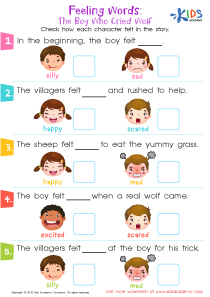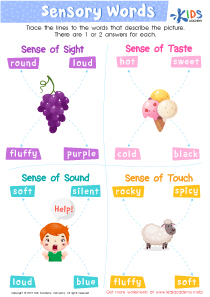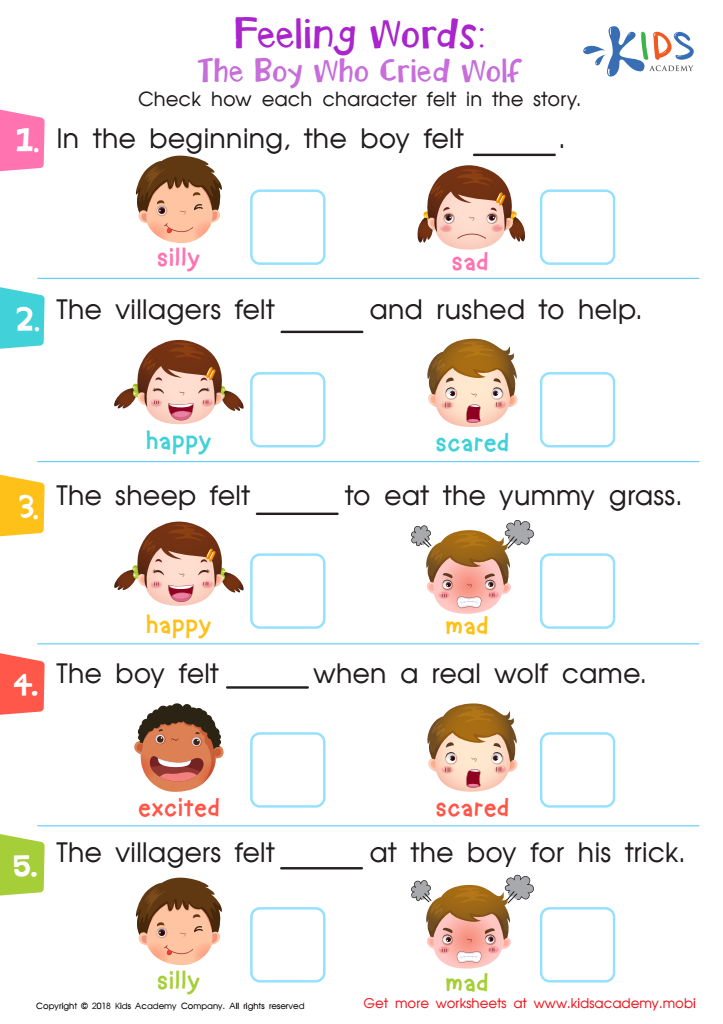Identify Words in Stories that Suggest Feelings or Appeal to the Senses - Lesson for Grade 1, Chapter - Literature
In this engaging lesson titled "Identify Words in Stories that Suggest Feelings or Appeal to the Senses," first-grade students embark on a literary journey through the captivating realm of stories and their power to evoke emotions and sensory experiences. Through targeted activities, including the "Feeling Words: The Boy Who Cried Wolf Worksheet" and the "Sensory Words Worksheet," students will develop a keen eye for words that convey feelings such as happiness, sadness, fear, and excitement. They will also learn to recognize words that appeal to the five senses—sight, sound, smell, taste, and touch—enhancing their ability to immerse themselves deeply in the narrative.
Understanding how words can suggest feelings or invoke sensory experiences is crucial for young learners. It not only enriches their reading comprehension by enabling them to connect more deeply with the characters and settings but also lays the groundwork for their own expressive skills in writing and storytelling. By learning to identify and appreciate these descriptive words, students will enhance their literary enjoyment and develop a greater empathy and understanding of the world around them. This lesson is a vital step in fostering a lifelong love for reading and an appreciation for the nuances of language.


-
Activity 1 / Feeling Words: The Boy Who Cried Wolf Worksheet
Being able to infer a character’s traits or feelings is a comprehension skill that is taught so that the reader learns more about the characters and extract more meaning from the text. This aids in the overall comprehension of the story. With this worksheet students read The Boy Who Cried Wolf and then choose the correct emotion for the characters in the story. This printable is a great resource for the reading classroom.
-
Activity 2 / Sensory Words Worksheet
Sensory words are words that describe how something looks, feels, tastes, smells and sounds. When a text includes sensory words, the content is much more interesting and a student comprehends more about the story or article. This worksheet provides students the opportunity to read and explore common sensory words by looking at picture and choosing one or two words that describe how picture looks, smells, sounds or tastes.



